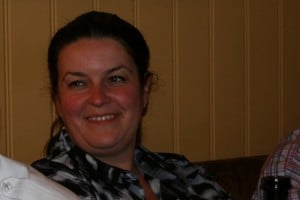The ‘Bring a Bottle Club’ on the theme of Champagne – chosen to honour Janet’s birthday – proved quite a challenge. As the wines are tasted blind, there are only a small number of possible factors to consider:
- colour – all the wines were all white, not a single rosé!
- there are a small number of still wines from Champagne but nobody brought one
- similarly, there are various grades of dry and sweeter wines, but these were all pretty much Brut: no ‘nature’ or anything half or fully sweet
- grape blend: some permutation of Chardonnay, Pinot Noir and Pinot Meunier
- non-vintage or vintage
- age
- house style – the big Champagne houses aim for continuity from year to year which might give you a clue, but in fact all the wines were from the interesting, less predictable small houses
- if you are in the advanced class, individual Premier Cru or Grand Cru villages.
So with hindsight, it is easy to see why this was such a difficult, if pleasurable, exercise. And, as it worked out, we agreed that we needed to organise an expert-led tutored tasting. With wine tasting, as in so many other fields, the answer is ‘more research needed’!
We started with a really nice gesture – a bottle of Berry Bros Grand Cru produced by one of the group who wasn’t able to come to the tasting. Not only was that really generous, but it set a sort of benchmark, especially as it was tasted knowing what it was. 75% Pinot Noir and then Chardonnay, this was an excellent wine, fine, rich and yeasty on the nose, substantial and structured on the palate, with a long finish. It was rather more substantial than quite a few of the wines which followed, but then it is Grand Cru.
Wine number 2 was younger, lighter and more refreshing than the first. We guessed correctly that it was a classic Champagne blend, Pinot Meunier Pinot Noir and Chardonnay (in this case 40, 40, 20%). People commented on the way that it filled the mouth with its sherbet bubbles. Autréau Premier Cru Brut, from Champillon, near Epernay.
Inevitably there were some unknown connections in the wines that we brought. Here the common factors were first Waitrose and then Duval LeRoy, based in the Côtes de Blanc village of Vertus. As it happened Duval LeRoy is literally next door to André Jacquart which also featured in the tasting. In tasting order, a Brut 2004 vintage wine (picture on the left), 100% Chardonnay – quite floral, excellent sharp apples, lees, biscuits, with some ageing. The second, Fleur de Champagne Premier Cru – again good ginger biscuit notes, rounded fruit, apple and melon, very persistent. A contrast to its neighbour from André Jacquart, Blanc de Blanc Brut, which has fine assertive fruit and freshness with a creamy even rice pudding or banana finish, having been fermented in barrels.
Ok here was the googly. After a slightly sulphury start, this wine was rather different, with a ‘fruit drop’ or confected nose, some elderflower aroma, then a rich and mouth-filling palate with fruit sweetness and a drying finish. Some wondered if it was Champagne … and they were right. It was an English intruder … Camel Valley, ‘Cornwall’, Brut 2009.
Was this really Champagne or had an old if light glass of sherry with a hint of effervescence been smuggled into this company? The colour alone told us that this was not in the best of conditions. But it still had merits if in an oxidised way with some toffee notes, residual fruit and decent acidity. My guess was for 40 years old which was about my only correct one of the evening! Louis Roederer 1971 – other bottles had withstood the rigours of age better.
 Not so much back on the straight and narrow but to the top of the (quality) pyramid. Fine nose of elderflower and fruit and then a beautifully structured wine with sinews. Some spotted that it was Blanc de Blanc, ie 100% Chardonnay. Jacques Selosse VO (Version Originale) Extra Brut is a grand Grand Cru wine. The unusually informative back label tells us it is made in a tiny batch of 3600 bottles, blended across three years and from three vineyards, Avize, Cramant and Oger, You can read a particularly enthusiastic review of this wine here and a professional one here.
Not so much back on the straight and narrow but to the top of the (quality) pyramid. Fine nose of elderflower and fruit and then a beautifully structured wine with sinews. Some spotted that it was Blanc de Blanc, ie 100% Chardonnay. Jacques Selosse VO (Version Originale) Extra Brut is a grand Grand Cru wine. The unusually informative back label tells us it is made in a tiny batch of 3600 bottles, blended across three years and from three vineyards, Avize, Cramant and Oger, You can read a particularly enthusiastic review of this wine here and a professional one here.
And another unannounced ‘pair’, perhaps not surprisingly from local wine merchant Caviste. Camille Savès: the non-vintage ‘Carte Blanche’ Premier Cru on the right, the Grand Cru Bouzy 2002 in the blue label on the left. The former presented as a nicely balanced wine from 75% Pinot Noir and 25% Chardonnay (with some Premier Cru and Grand Cru fruit) with a rich, spicy approach. The latter leads with rich fruit (quince) and oak notes, a rich palate featuring ripe and sharp apple flavours, not particularly complex but powerful and very good. From the Bouzy Grand Cru vineyard: 80% Pinot Noir and 20% Chardonnay.
As always, the food at the Red Lion, Overton, was superb – and you can eat with your eyes as well as your taste and smell: so much easier. Champagne is a great theme but we could have done with more variety in styles. And we clearly need more practice.





